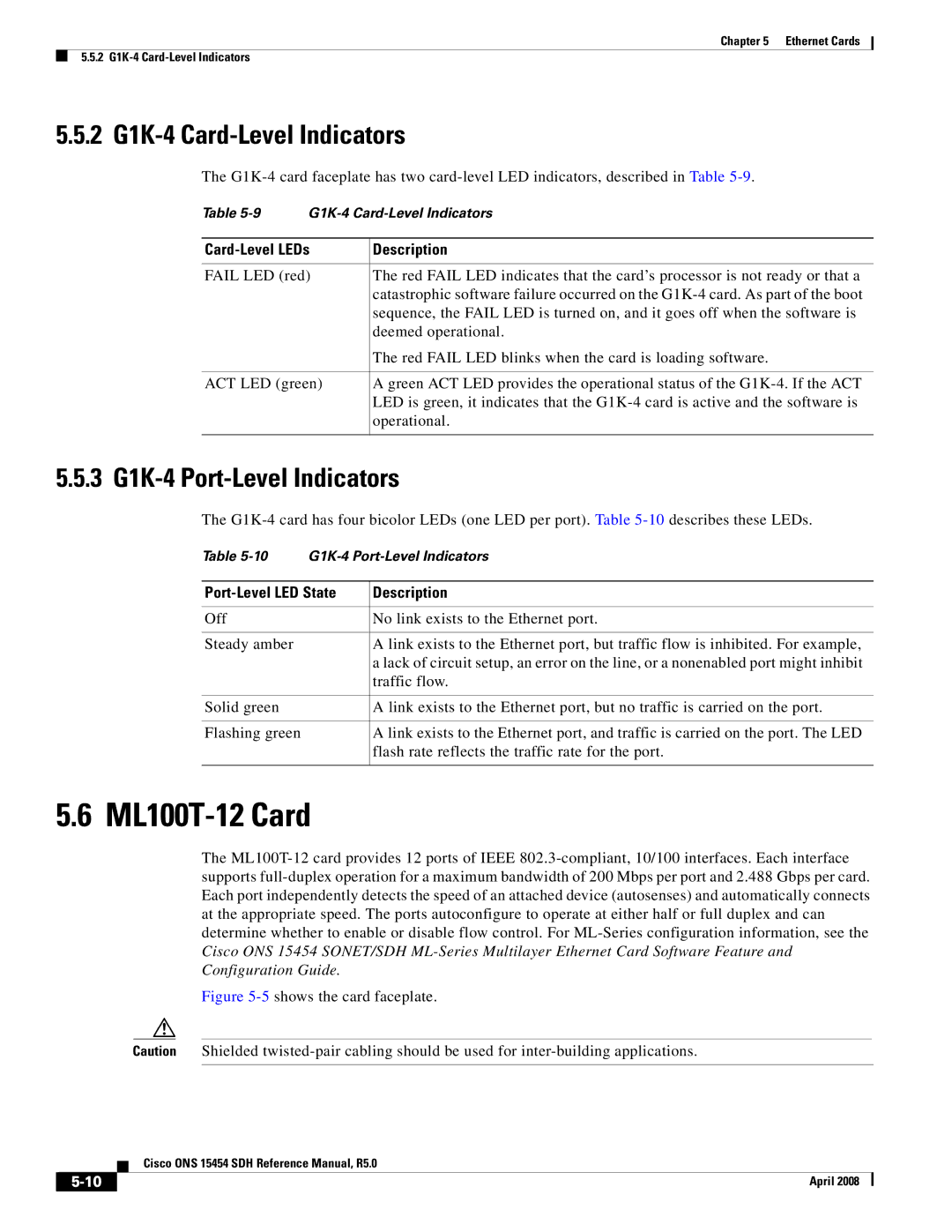ONS 15454 SDH specifications
Cisco Systems ONS 15454 SDH is a highly regarded optical networking platform used for managing the transport of data over fiber networks. Designed to meet the growing demands for bandwidth and service flexibility, this platform serves as a robust solution for service providers and enterprises seeking efficient and reliable network communications.One of the key features of the ONS 15454 SDH is its flexibility in supporting various transmission rates. The system is capable of handling a wide range of optical signals, from low-speed T1/E1 to high-speed STM-64/OC-192 interfaces. This versatility enables operators to scale their networks according to changing demands, facilitating seamless upgrades without the need for extensive reconfiguration.
In addition to its flexible interface options, the ONS 15454 SDH integrates powerful switching capabilities. The platform supports multiprotocol label switching (MPLS), which allows for efficient traffic engineering and improved throughput. This technology enables the creation of virtual circuits, offering granular control over bandwidth allocation and enhancing the overall efficiency of data transport.
Another noteworthy characteristic of the ONS 15454 SDH is its advanced performance monitoring features. The system incorporates a comprehensive suite of management tools, including real-time performance metrics and fault detection capabilities. These tools enable network operators to proactively address issues before they impact service quality, thereby ensuring optimal network performance.
Scalability is also a defining attribute of the ONS 15454 SDH. The architecture is modular, allowing users to add or remove line cards as necessary. This allows organizations to start with a basic setup and expand their network capacity as needed without significant hardware investments. Moreover, the platform is designed with redundancy in mind, offering hot-swappable components that enhance system reliability and minimize downtime.
Security is pivotal in today’s networking landscape, and the ONS 15454 SDH addresses this need through various encryption and integrity-checking mechanisms. This helps safeguard sensitive data as it traverses the network, making it suitable for industries where data security is paramount.
In conclusion, Cisco Systems ONS 15454 SDH stands out due to its versatility, performance monitoring, scalability, and security features. It is an ideal choice for organizations aiming to build a resilient and efficient optical transport network that can adapt to the evolving demands of modern communication. As businesses continue to require higher bandwidth and more sophisticated network solutions, the ONS 15454 SDH remains a critical player in the optical networking market.

